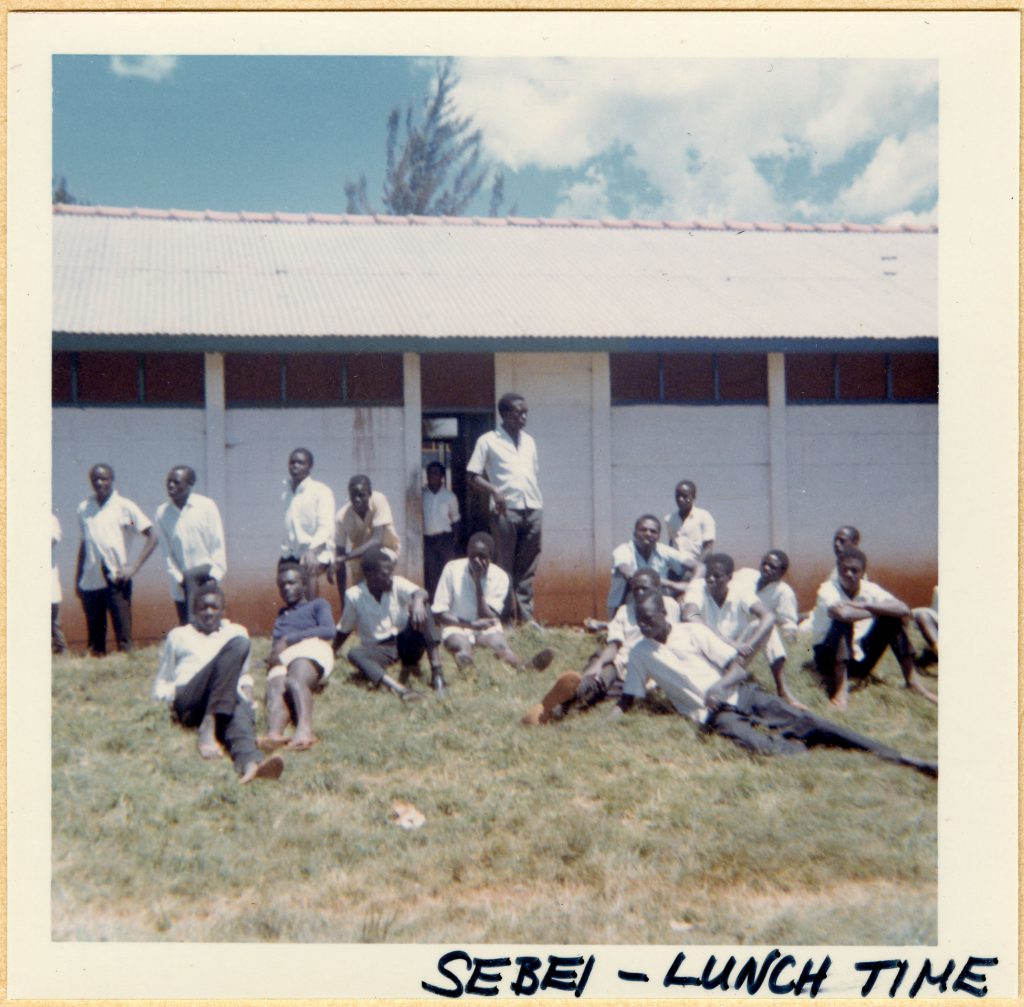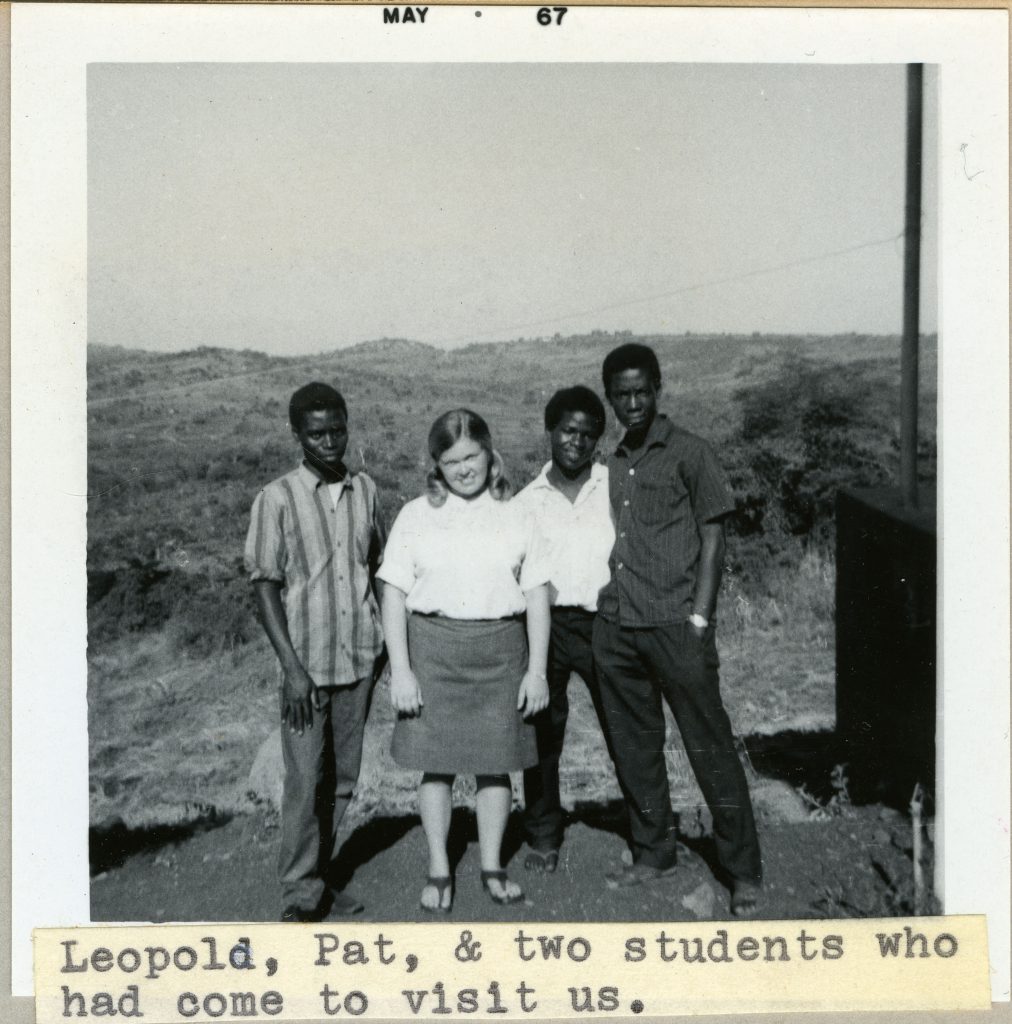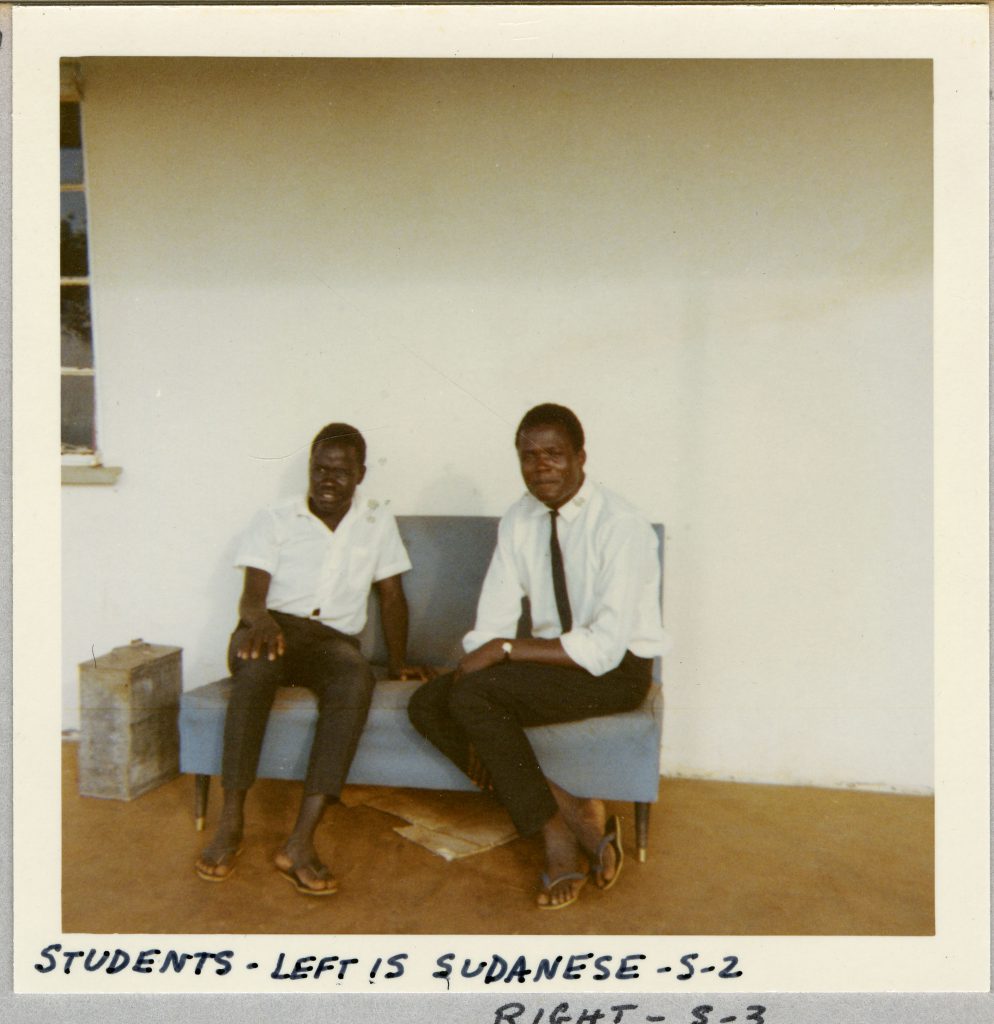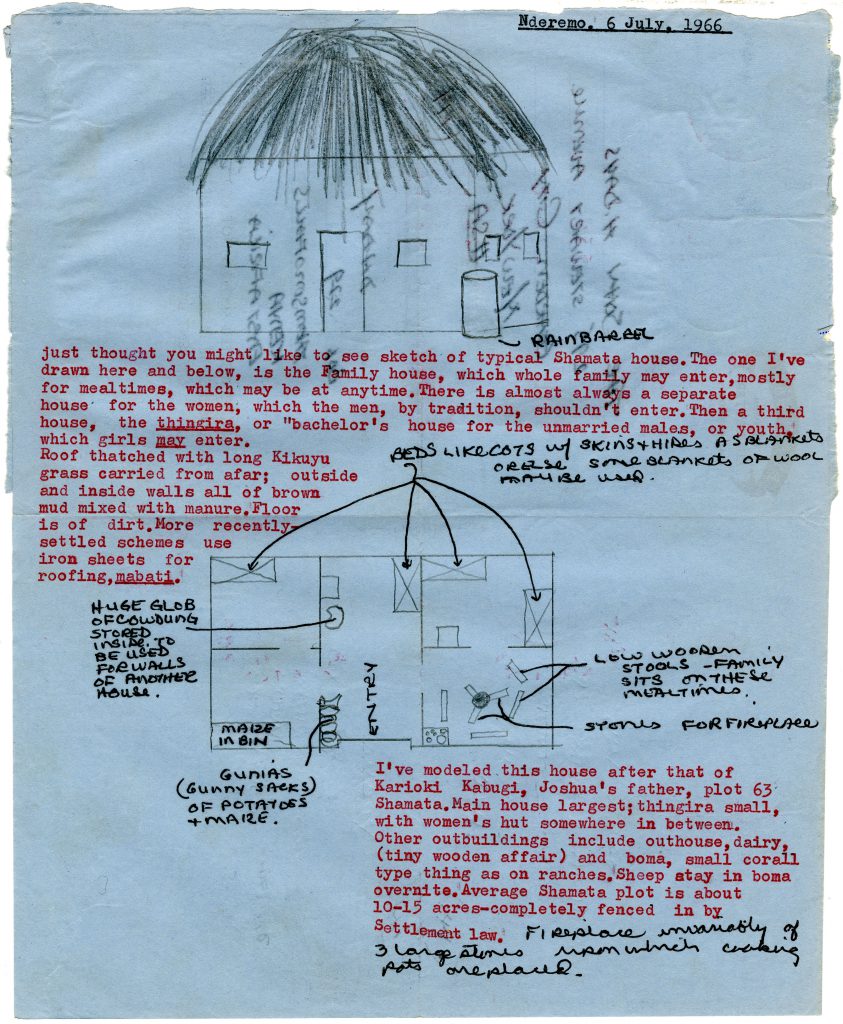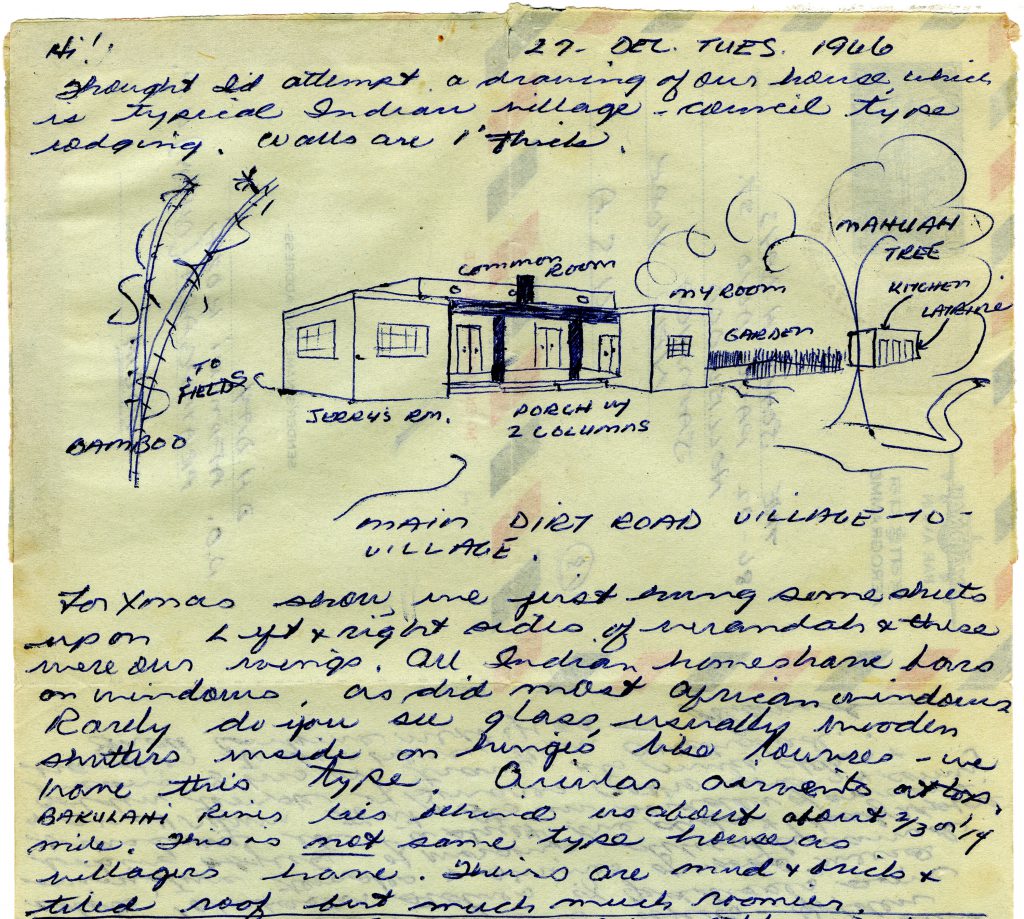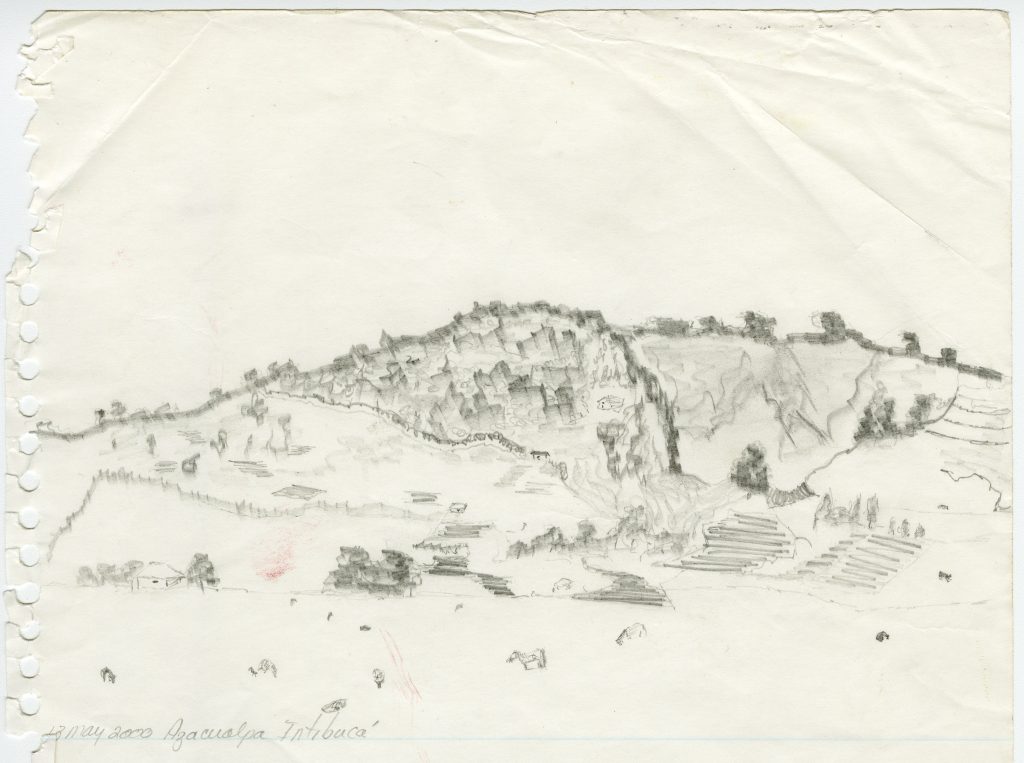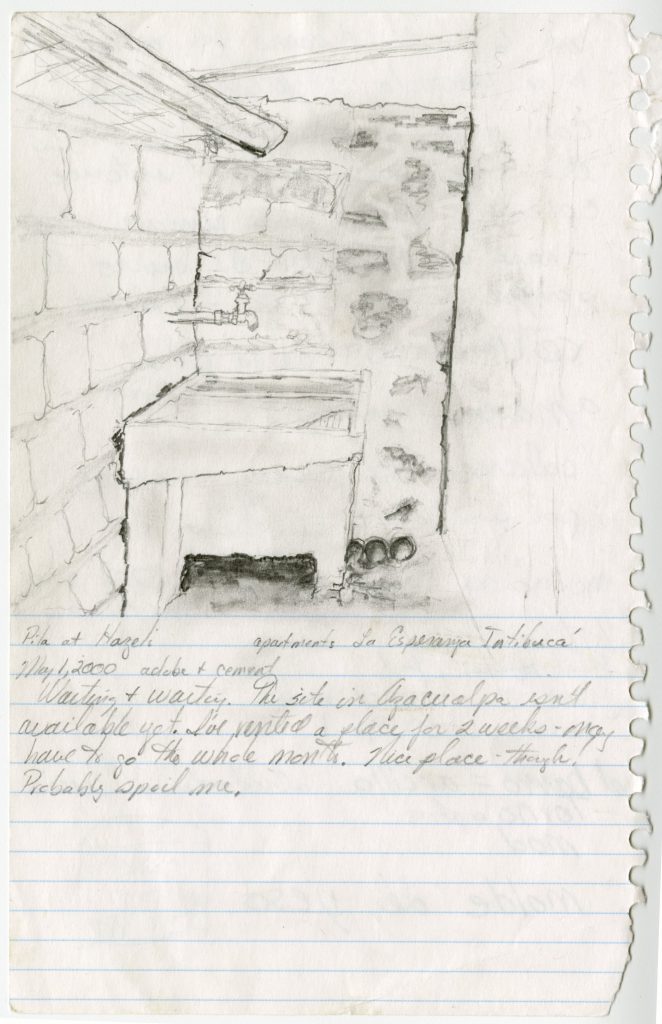Letters to Peace Corps Volunteers are important connections to home. While they’re away, it’s typically difficult for family and friends to get ahold of their PCVs, even with the convenience of telephones. There are many letters within the collection of the Peace Corps Community Archive, which detail the lives of both the Volunteers and their correspondents. From the happiness of a marriage announcement, to the sadness of a relative’s illness, these letters take a simple piece of paper and turn it into a window into PCVs’ lives.
While the contents of the letters allow a glimpse into the experiences and struggles of PCVs, the paper the letters are written on can also offer a different perspective. Many times, early PCVs utilized the service of Airmail. From Ethiopia to Antigua, the Peace Corps Community Archive houses various examples of Airmail from around the world.
The first official Airmail route in the world began on May 15, 1918 between New York and Washington, D.C., with a spot in Philadelphia. Peace Corps Volunteers did well to utilize Airmail to send their letters home. Airmail was typically faster than “surface mail,” and reasonably priced given its light weight. Therefore, nothing other than the letter itself could be sent since enclosed objects or paper would effect the weight. Airmail was sent on specific paper created to fold and glue into an envelope for easier transport, called an Aerogram. Nearly all examples of Airmail in the Archive are of this type of Aerogram.
Each Aerogram letter has a different, interesting design. Ranging from a simple red and blue border to a detailed design of a zebra, each Aerogram is distinctive to its country of origin.
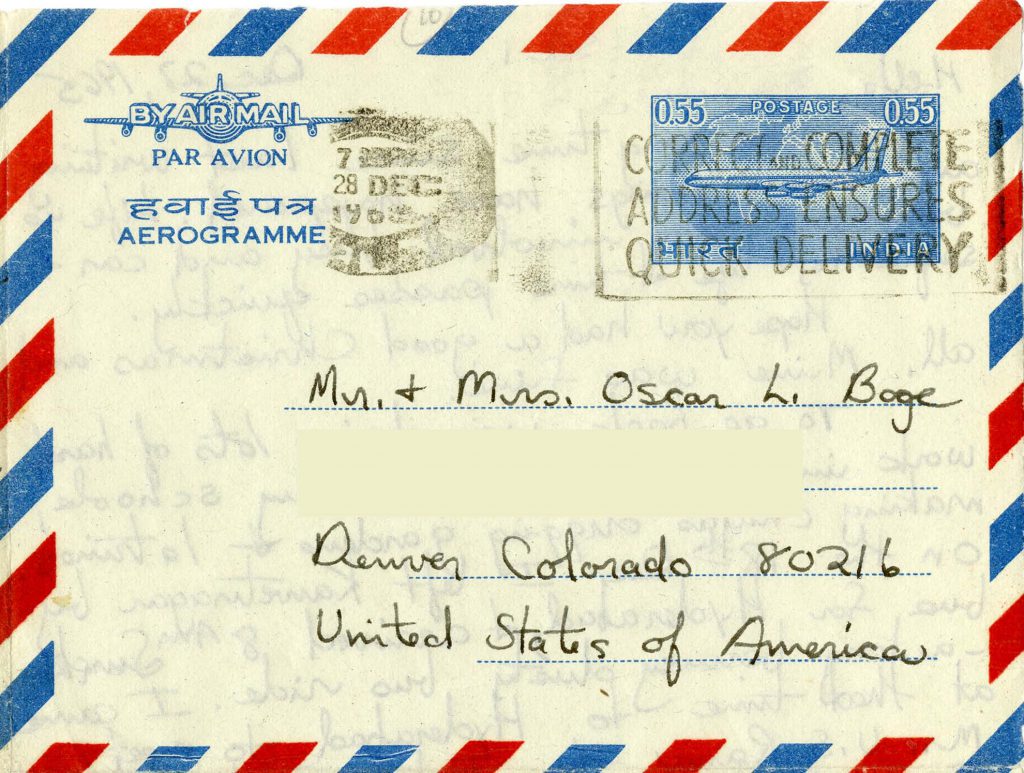
The iconic red and blue stripes of Airmail are seen all over Aerograms. Winifred Boge sent this letter and many like it from her time in India to her parents in the 1960s. Since the 1960s, the Airmail border has been used everywhere, such as fashion accessories and travel documents.
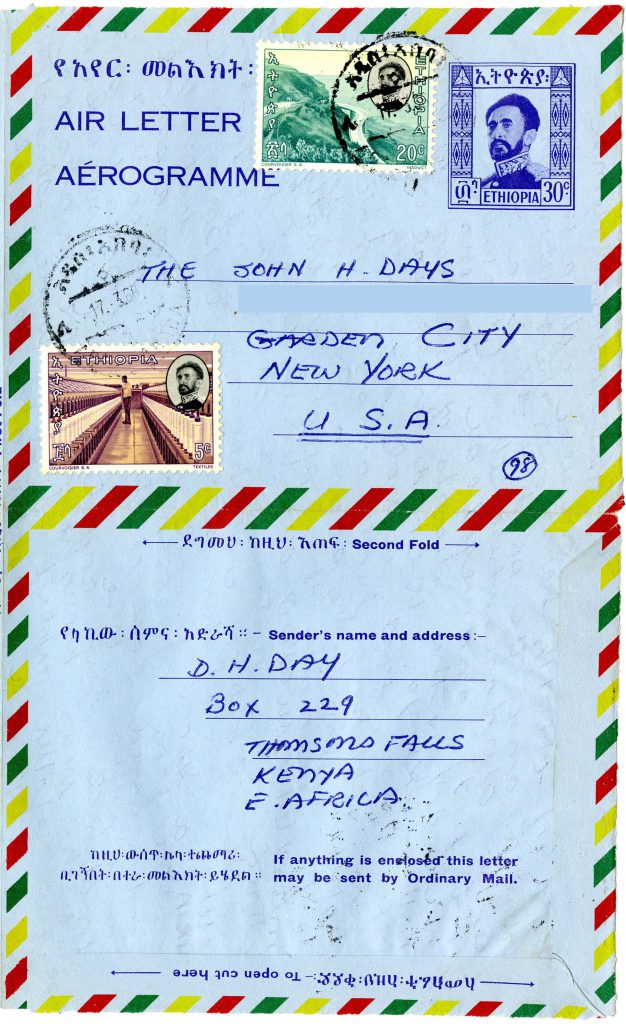
David Day sent this Aerogram to his parents when he visited Ethiopia in the 1960s. The stamps all feature Ethiopia’s regent, Haile Selassie I, who reigned from 1930 to 1974. While some Aerograms had pre-paid stamps, some required the purchase of postage. The Aerograms in the collection feature a range of stamps from different countries.
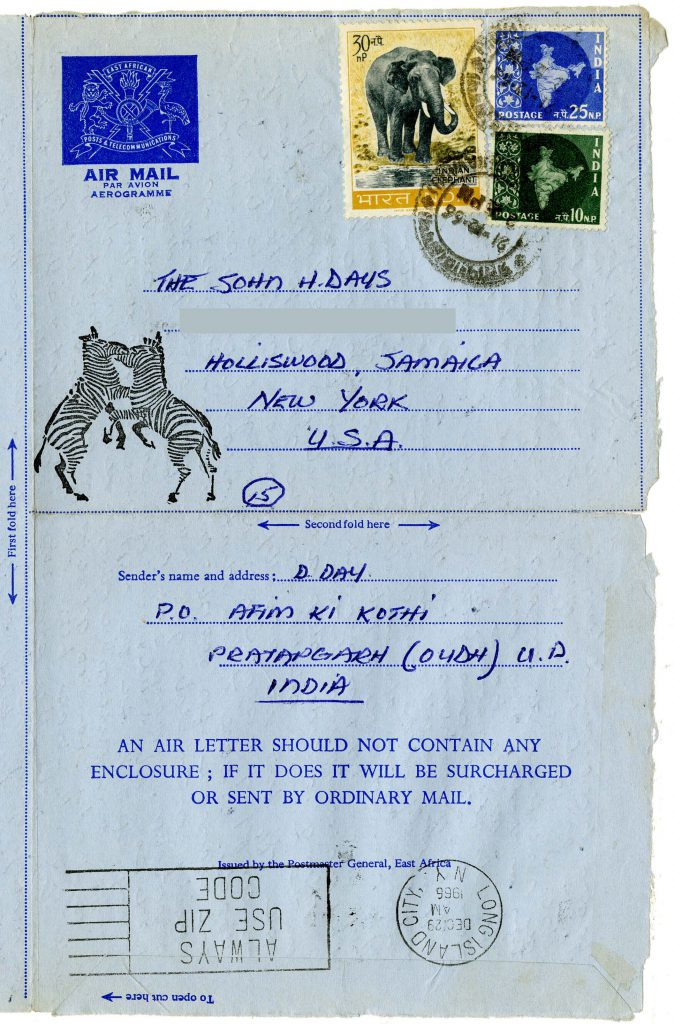
Day also sent this Airmail to his parents in 1966. Interestingly enough, he acquired this Aerogram from his time in East Africa, when he served in Kenya. However, once he was transferred to serve in India, he sent this letter with Indian postage.
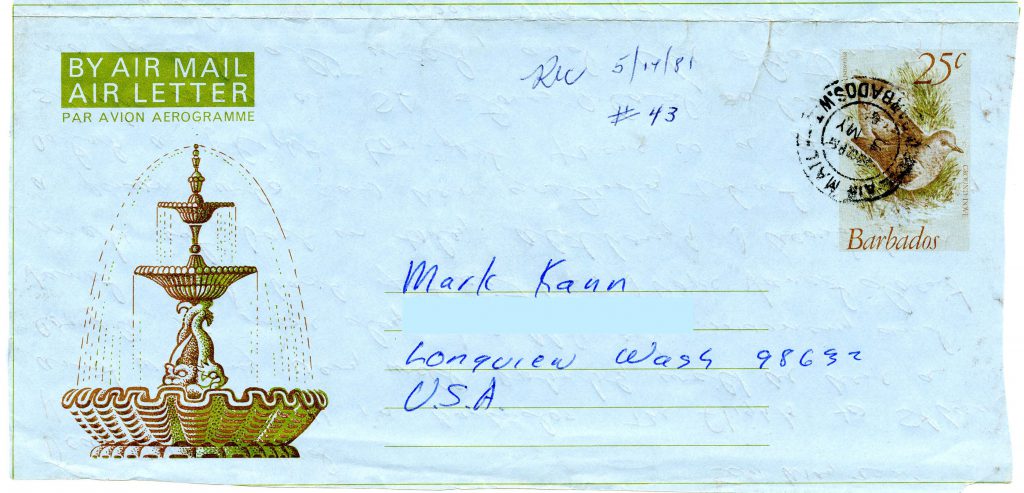
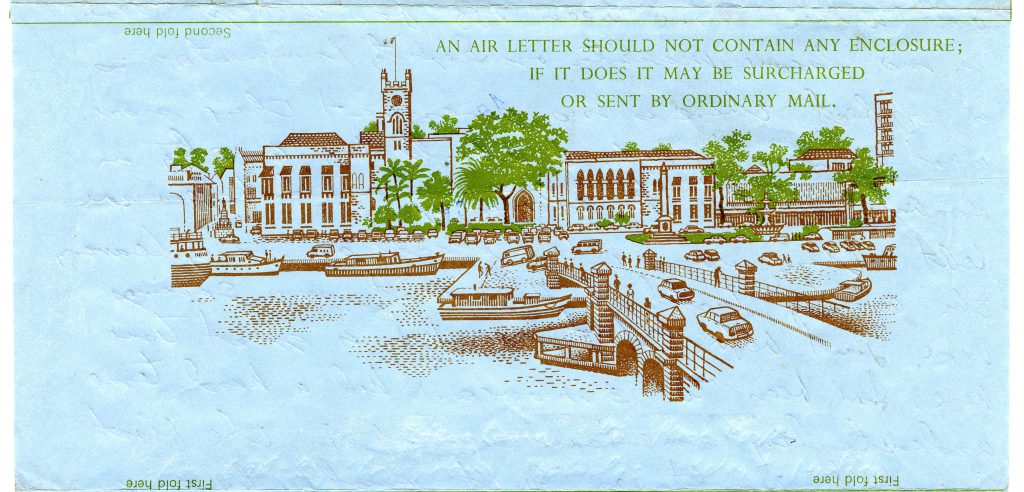
Janet and Steve Kann sent this letter from Barbados in 1981 as they served in the East Caribbean. This letter highlights the Barbados Parliament Buildings in Bridgetown, Barbados. While this Aerogram was sent in the 1980s, Aerograms cannot be used today without the purchase of extra postage, they were used throughout the late 21st century.
For more information, please visit the Peace Corps Community Archive website. To use the collections or make a donation, please contact the AU Archives at archives [at] american.edu.

